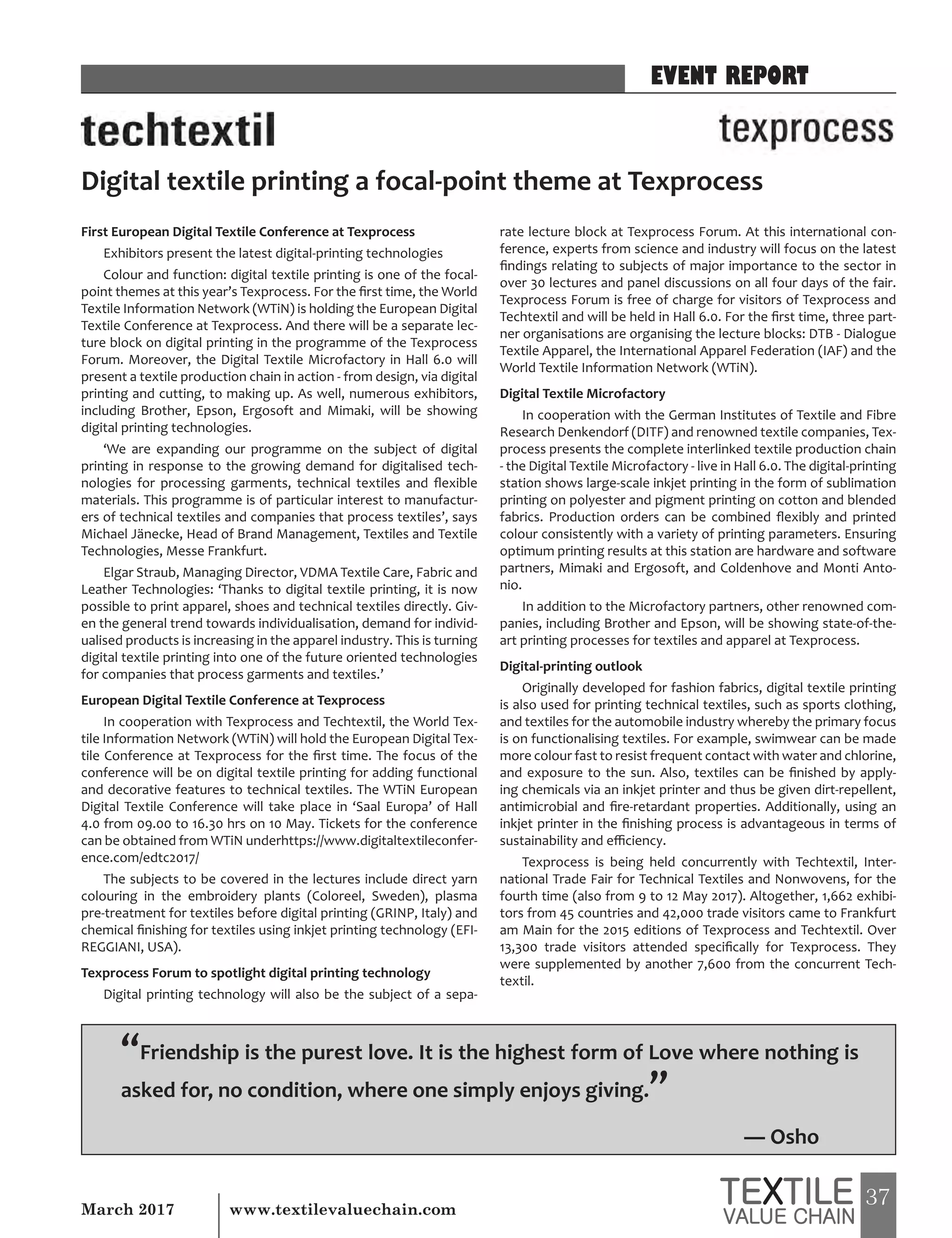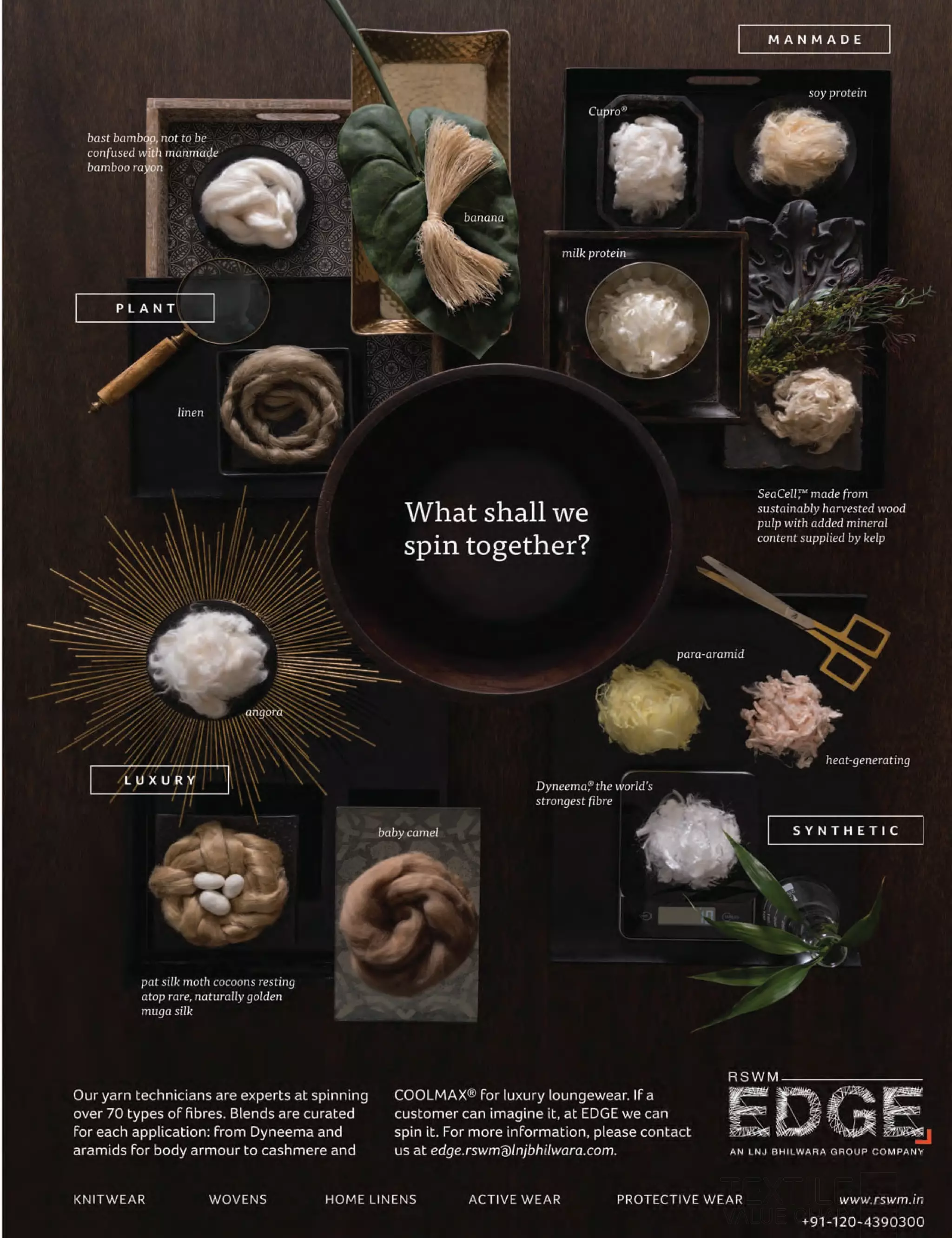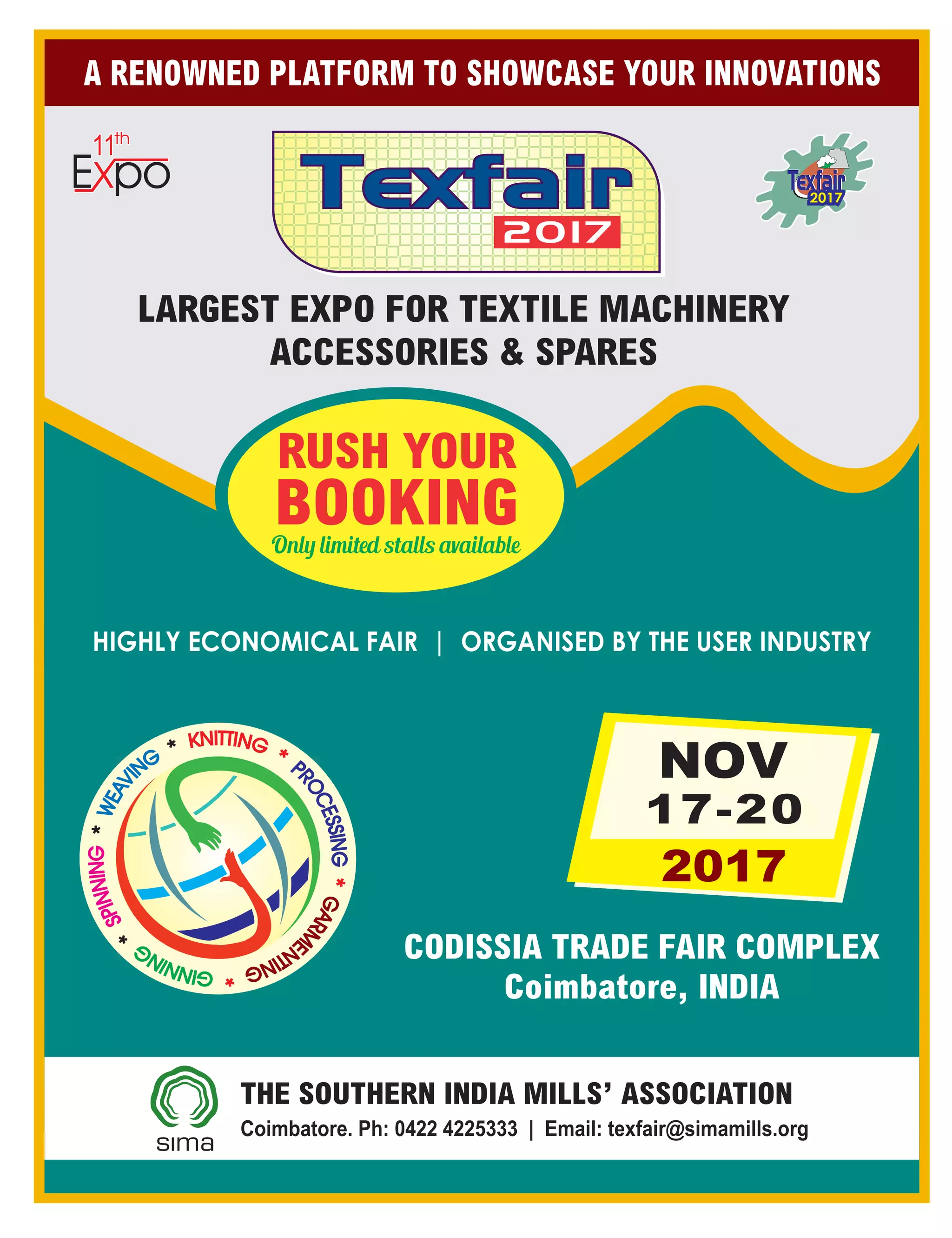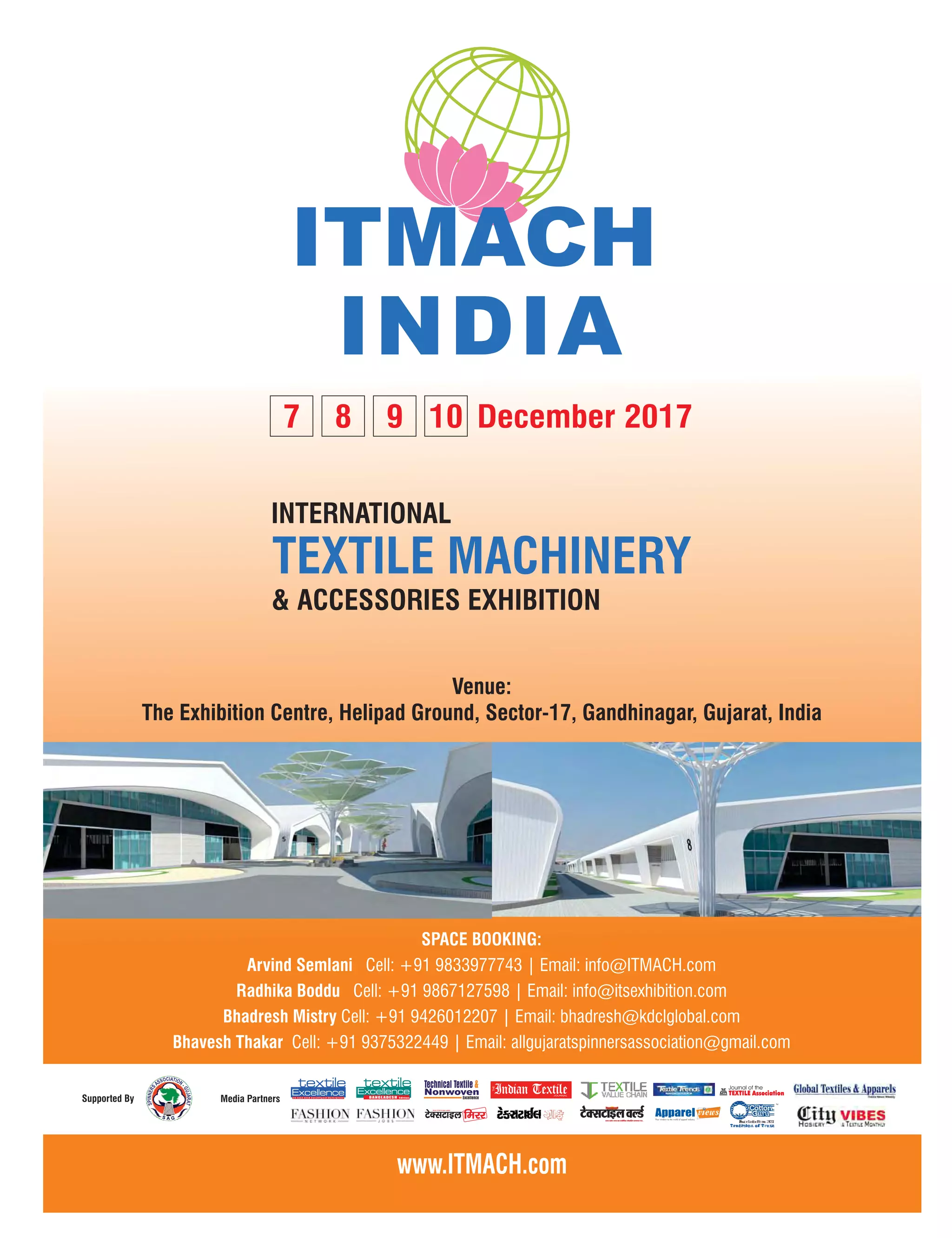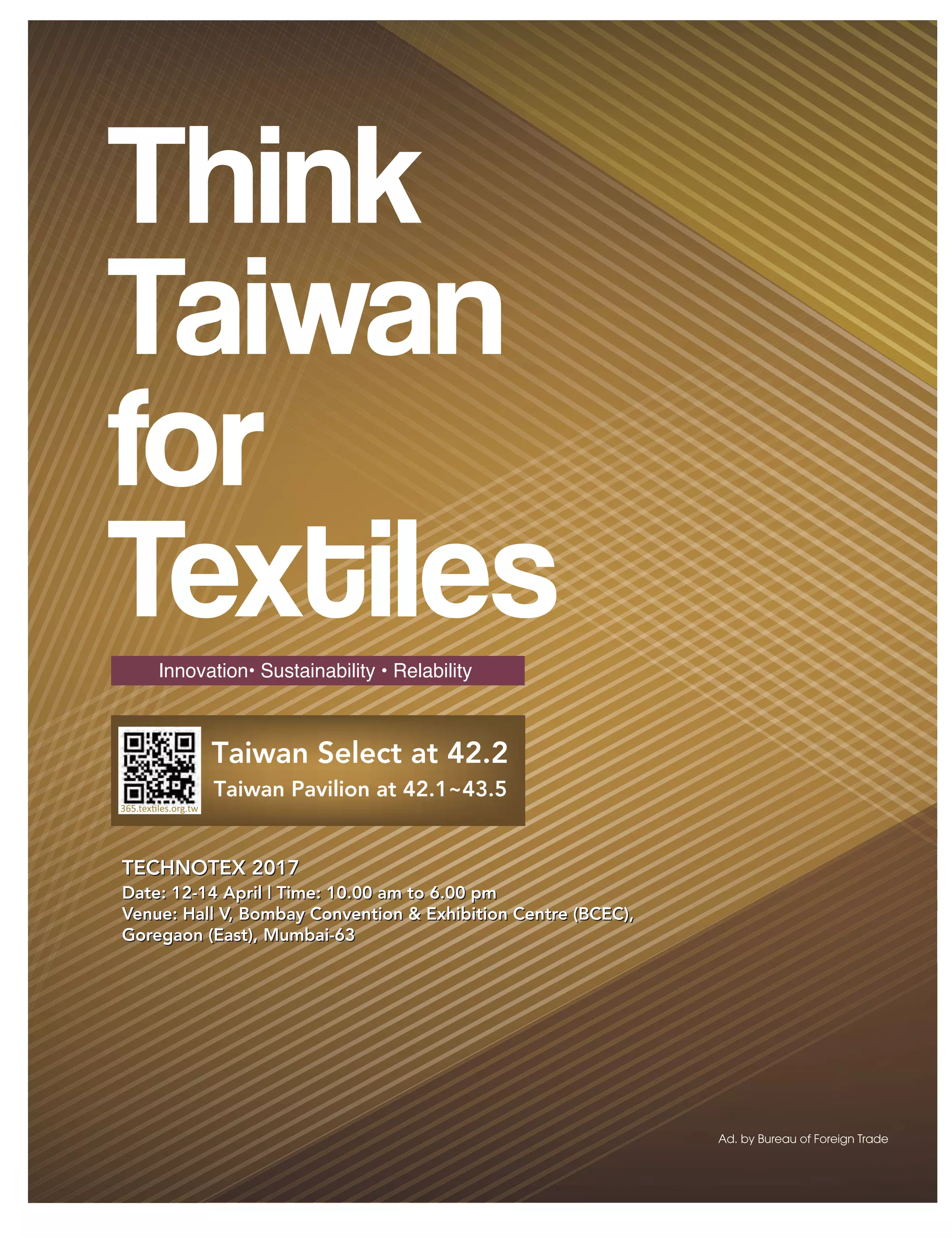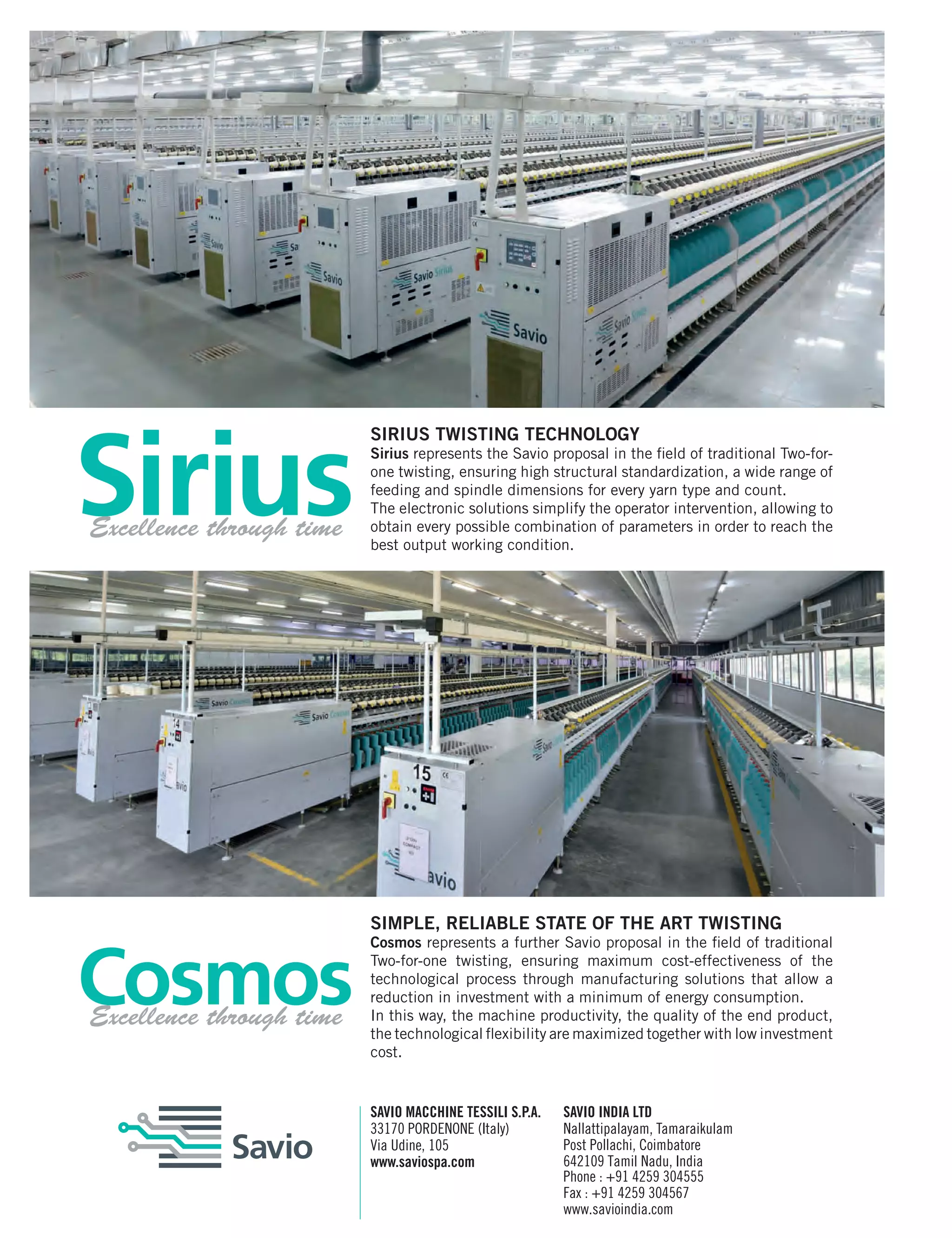The article discusses China's initiative to revive the historic Silk Road trade route between its borders and Europe. Announced in 2013, the plan involves two new trade corridors, one overland and one maritime, connecting China to Central Asia, the Middle East, and Europe. There are both commercial and geopolitical motivations for the project. Commercially, it will help China export excess industrial capacity and import natural resources. Geopolitically, it expands China's economic and political influence in the region. While expensive and controversial, the project aims to advance China's strategic interests.
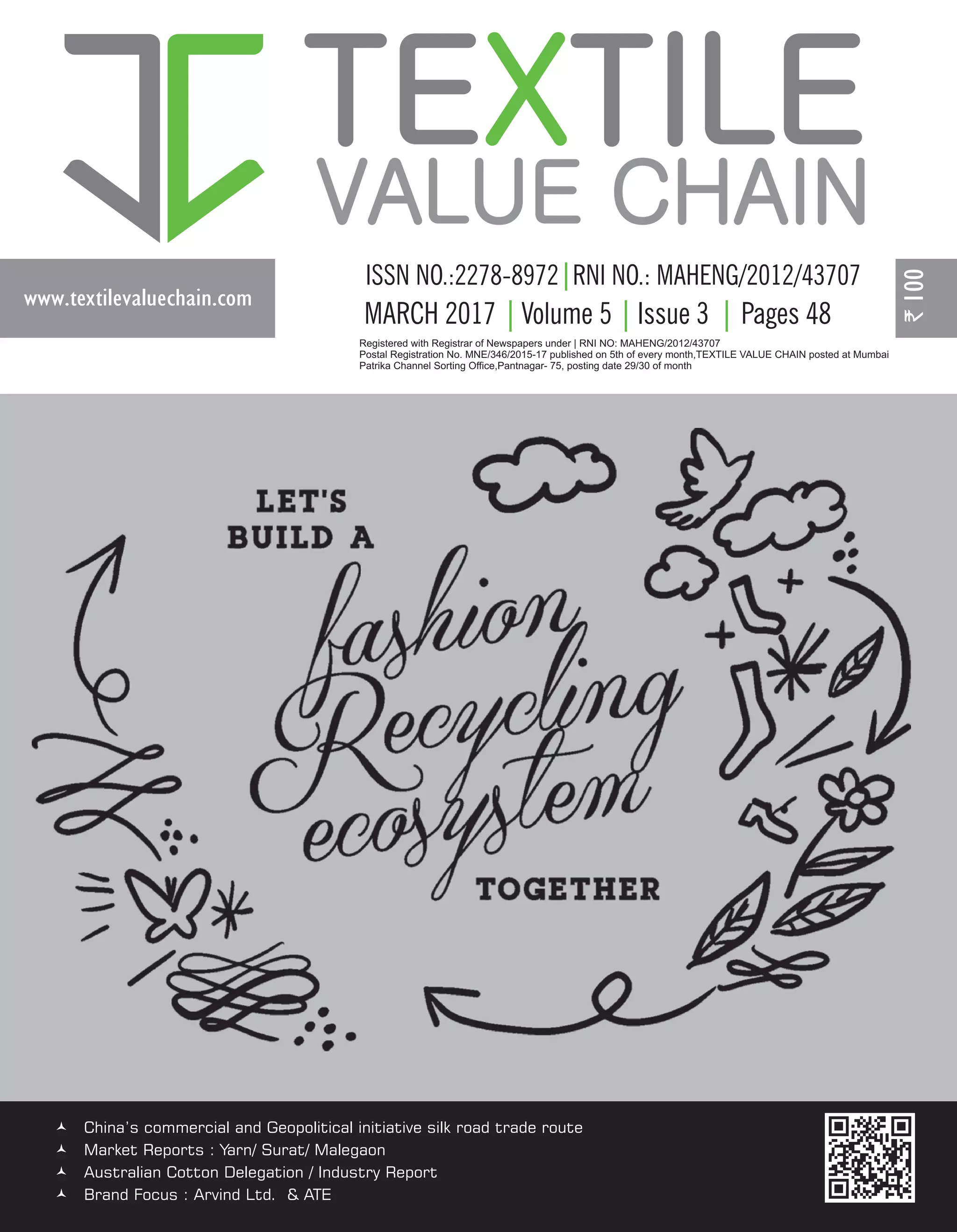


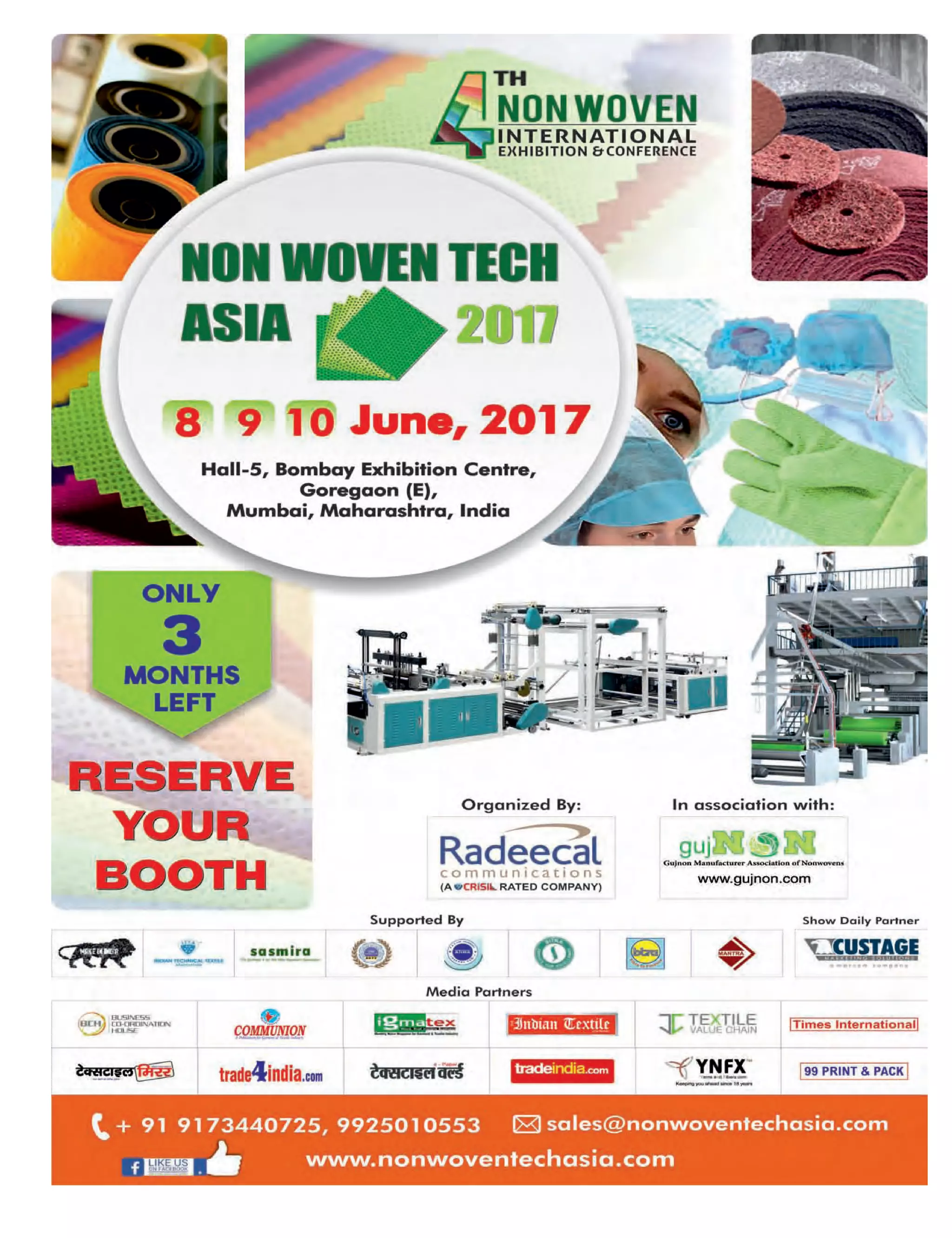

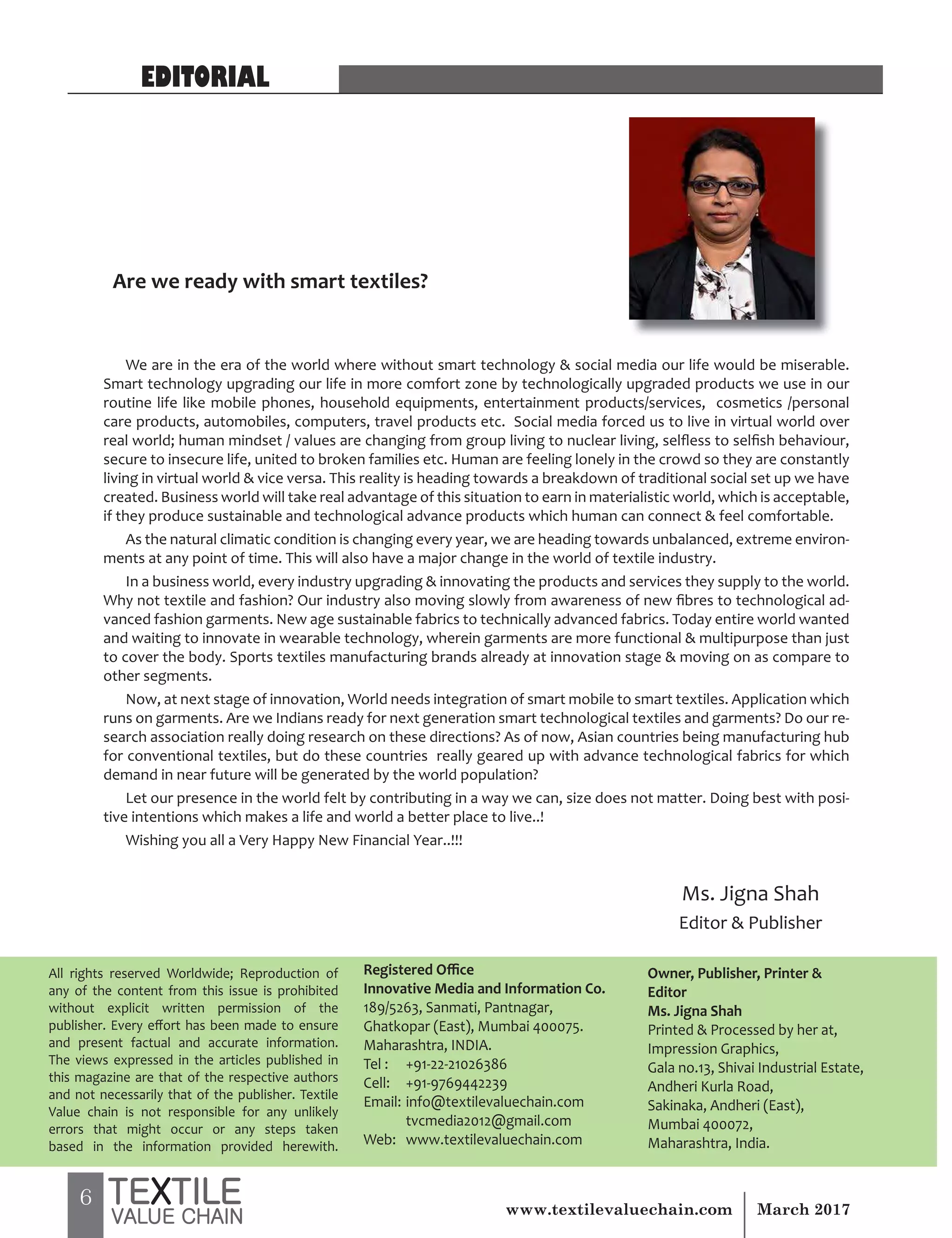




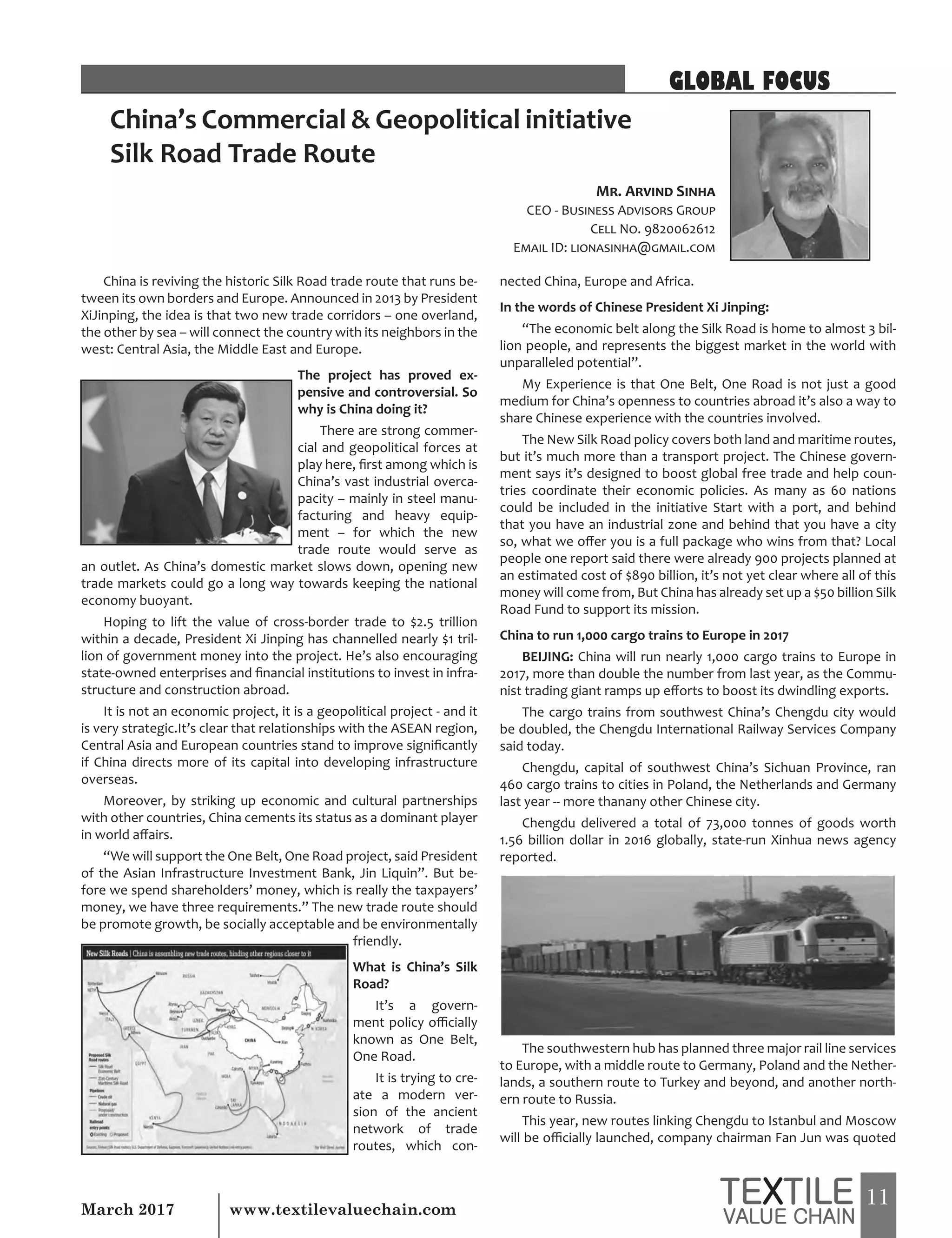


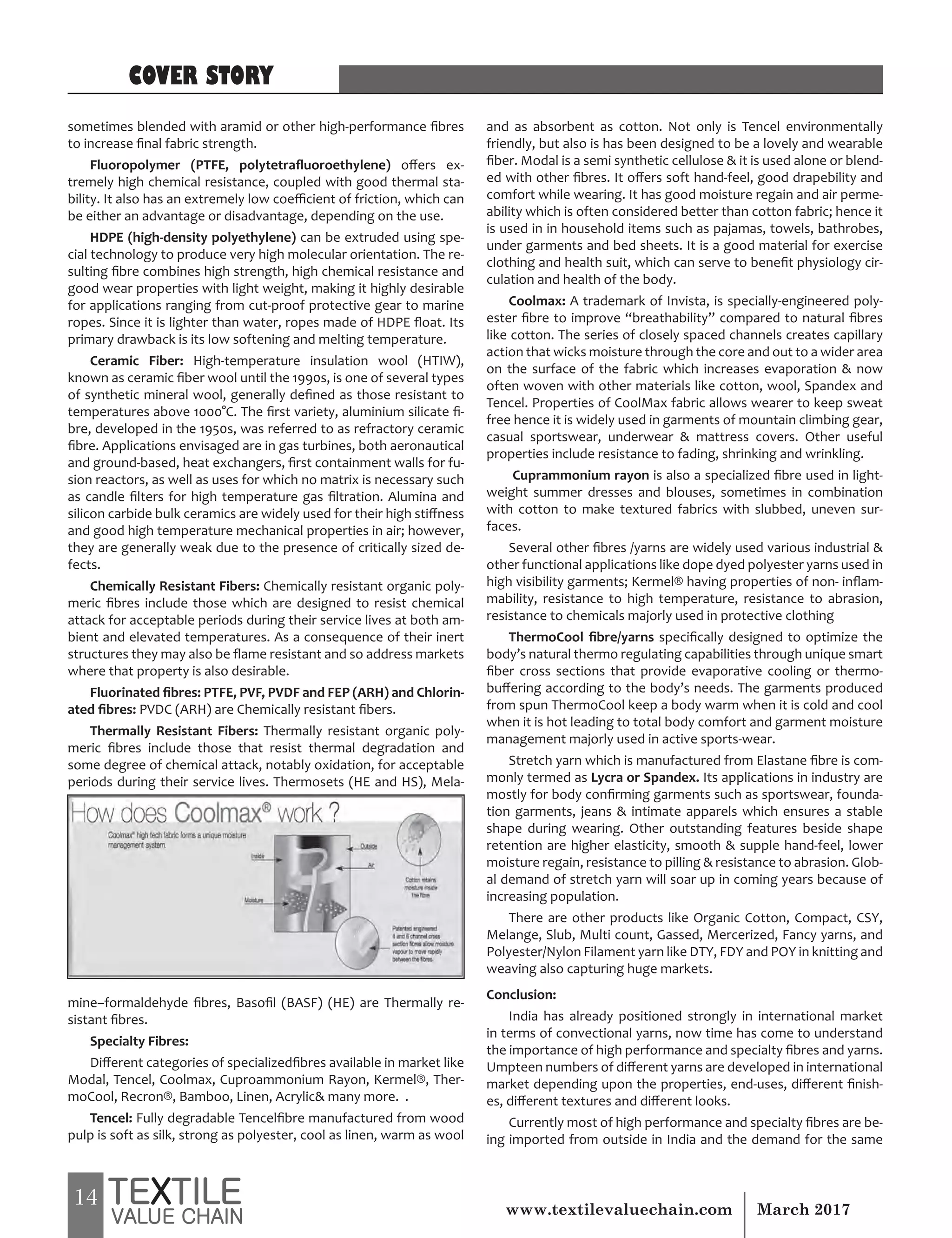








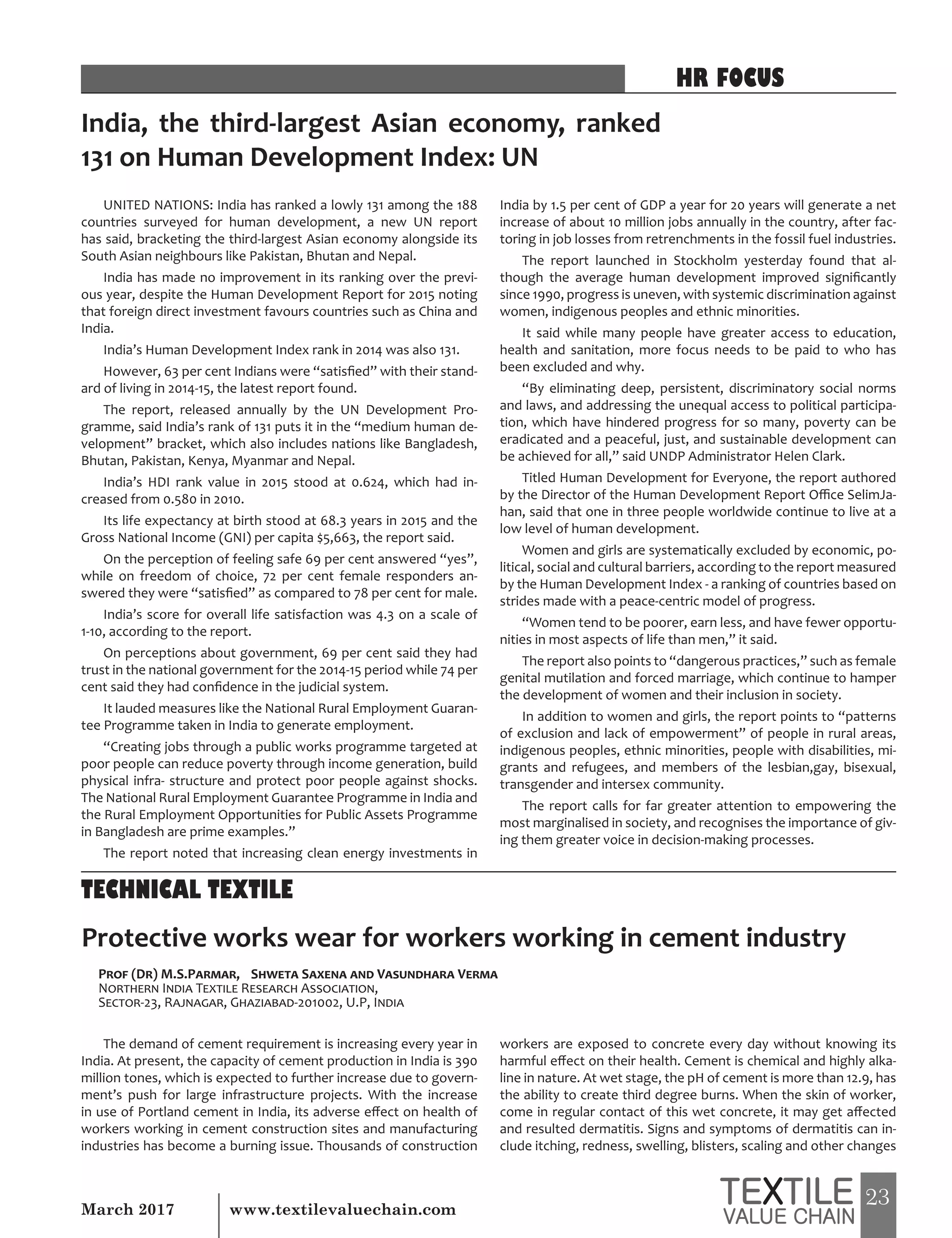






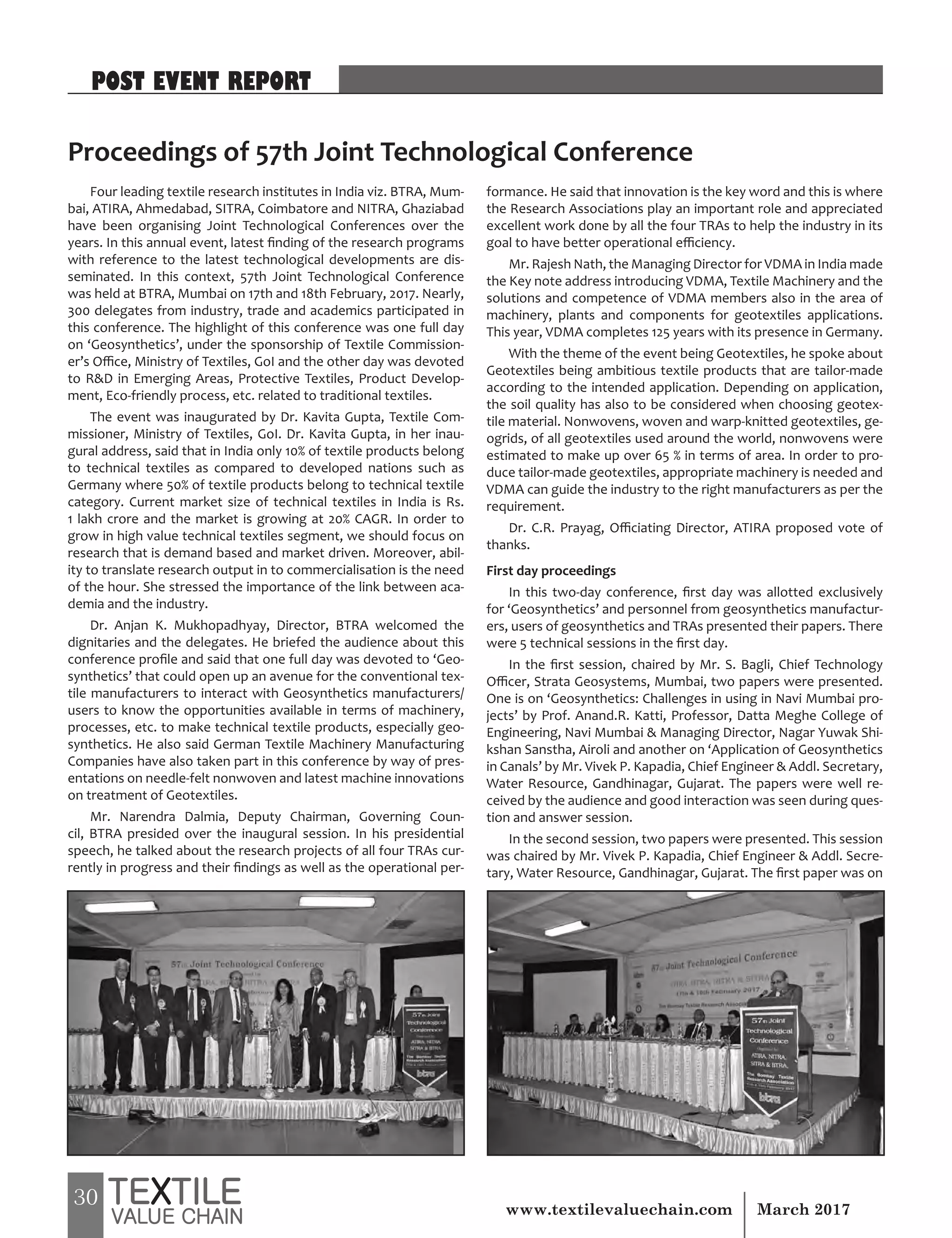
![31March 2017 www.textilevaluechain.com
‘Metal net covered sand fill bags for erosion and flood control’ by
Ms. Sonal Kulkarni, Maccaferri Environmental Solutions Pvt. Ltd. ,
Gurgaon and second one was on ‘Geosynthetic systems for coastal
erosion control with case reference of Alleppay Kerala’ by Mr. Ro-
hit Chaturvedi, Vice President Business Development, Flexituff In-
ternational Ltd., Madhya Pradesh.
The third session was chaired by Mr. Guru Vittal, Chief Scientist,
CRRI, New Delhi. The following three papers were presented.
• Strengthening of road subgrade and slope stabilization using
Jute Geosynthetics-Mr. Pradip Kr. Choudhury, Principal Tech-
nologist, National Jute Board, Kolkata
• Geogrids for retaining walls – Mr. Satish Naik, Chief Executive
Officer ,Best Geotechnics Pvt. Ltd, Mumbai
• Geostrap for RE walls – Mr. Mangesh Shinde, Divisional Head
(South West Region), Reinforced Earth India Pvt. Ltd., Navi
Mumbai
Prof. A. R. Katti, Professor, Datta Meghe College of Engineer-
ing, Navi Mumbai Managing Director, Nagar Yuwak Shikshan
Sanstha, Airoli, chaired the fourth session. Two papers viz., (i) Re-
habilitation for existing landfills – Mr. Aditya Agarwal, CEO, Jeevan
Products, Navi Mumbai and (ii) Hydraulic properties of geo-textiles:
An experimental study - M/s. Seema Patel, R.V. Chikhani, Rajesh Pa-
tel and Jignesh Patel, ATIRA, were presented.
In the fifth session, Prof. S.G. Vinzenekar, Ex. Principal, VJTI,
Mumbai chaired the proceedings. The following three papers were
presented in this session.
• Challenges and potentials of using Geosynthetics in Road and
Bridges by Mr. P.L. Bongirwar, Retired Principal Secretary, PWD
• Vacuum PVD for fast soil stabilization by Mr. V.V. Vaishampayan,
Managing Director, Soham Foundations, Navi Mumbai
• Geotechnical expertise at BTRA by Mr. Sri Ramchandran, BTRA
Second day proceedings
In the second day, there were 7 technical sessions. Papers
from all four TRAs were presented in the areas of protective tex-
tiles, emerging areas, spinning, product development, eco-friendly
products, etc. In the end, there was a special session by German
Textile Machinery (VDMA), in which two papers were presented.
The focus of the First session was ‘Emerging Areas’ chaired by
Dr. M.K. Talukdar, Kusumgar Corporates Pvt. Ltd., Mumbai. There
were three papers in this session and all were from BTRA. Titles
were as follows.
• Use of electron beam irradiation for solution of biodegrada-
tion enhancement in textile industry by M/s. Smita Deogaonkar,
Megha Patel, BTRA and Kaushlesh P. Rawat, BARC
• Development of silver coated electro-conductive cotton fabric
using electron beam radiation technology by M/s. Kumar Krish-
nanand and Amol G. Thite ,BTRA
• Adhesion improvement of coated textiles by atmospheric plas-
ma treatment by M/s. Pratik Joshi and Shital Palaskar ,BTRA
In the second session, following two papers related to ‘Protective
Textiles’ were presented. Dr. A.K. Rakshit, Executive Director, ITTA,
Mumbai chaired the proceedings.
• Protective textiles to protect against electromagnetic radiation
- M/s. Pawan Sharma, Seema Patel and C.S. Vora , ATIRA
• Development of work wear for workers working in cement in-
dustry - M/s. M.S. Parmar, Shweta Saxena, Vasundhara Verma
and Satypriya Dash (M/s Arvind Ltd) [NITRA]
Prof. S.G. Vinzenekar, Ex. Principal, VJTI, Mumbai chaired the
third session on ‘Spinning’. The following three papers were pre-
sented.
• A new approach on study of twist contraction levels in modern
ring spinning process by M/s. D. Jayaraman and V. Vijayajothi ,SI-
TRA
• Influence of combing of polyester/cotton blended material on
yarn quality compared to the traditional processes by M/s. D.
Jayaraman and N. Vittopa, SITRA
• Achievable levels of UKG in modern spinning mills (Present and
Future scenario) by M/s. N. Vasanth Kumar and S. Chandira-
soodan ,SITRA
Chairman of the fourth session was Dr. Anirban Guha, Associate
Professor, IIT Bombay and the session topic was ‘Product Develop-
ment’. The following three papers were presented.
• Concept paper on development of nano-fibre based water filtra-
tion device for human beings by Mr. Chetan Mahajan, ATIRA
• Electronic drape tester based on image analysis technique by
M/s. Arindam Basu, Sanjeev Shukla, Krishan Dewan and Paurush
Godhar, NITRA
• Development of smoothness testers for finished fabrics by M/s.
M.S. Parmar, Nidhi Sisodia, Maheshwar Singh and Vasundhara
Verma, NITRA
In the fifth ‘General’ session, the following three papers, dealing
with spinning productivity, garment work practices and water
conservation in textile wet processing, were covered. Prof. S.G.
Vinzenekar, Ex. Principal, VJTI, Mumbai chaired this session.
• Productivity in spinning mills-2016 (based on SITRA’s 33rd Pro-
ductivity Survey) by M/s. J. Sreenivasan and P. Subash, SITRA
• A study of work practices in Indian garment factories by M/s.
Vivek Agarwal, M.M. Tiwari, Shweta Saxena, Kushagra Prakash
and M.K. Bansal, NITRA
• Practical approaches for water conservation in textile wet pro-
cessing by M/s. Tanaji Kadam and M.S. Kulkarni, BTRA
Prof. D.P. Chattopadhyay, Professor, M.S. University, Vadodara
chaired the sixth session on the topic of ‘Eco-friendly Products’.
There were two papers and the same are given as follows.
• Eco-friendly jute reinforced composite based toilet with bio-
digester by M/s. Kiran Dev, T. Gangopadhyay, Ashok Kumar, M.
Karthigeyan, Pravin Patel, K.K. Misra, C.S. Vora and S.S. Rathod,
AITRA
• Development of infant baby clothings using ecomordant and
natural dyes on cotton fabric with antibacterial activity by M/s.
K. H. Prabhu, S. Sivakumar and E. Prakash, SITRA
In the last session, personnel from German Textile Machinery
(VDMA) presented the following two papers.
• Mr Hjalmar Schwab, Sales Manager, DILO Systems on “Latest
technique and technology for the production of needle felted
nonwovens and their applications”
• Mr Juergen Hanel, Business Development Manager-Technical
Textiles, A. Monforts Textilmaschinen on “Latest machine inno-
vations for treatment of Geotextiles“
In the end, Dr. Anjan K. Mukhopadhyay, Director, BTRA thanked
all those who have contributed for the success of this event.
POST EVENT REPORT](https://image.slidesharecdn.com/march2017ecopy-170404063450/75/March-2017-Issue-31-2048.jpg)





